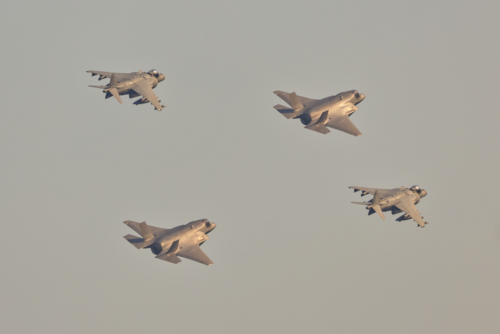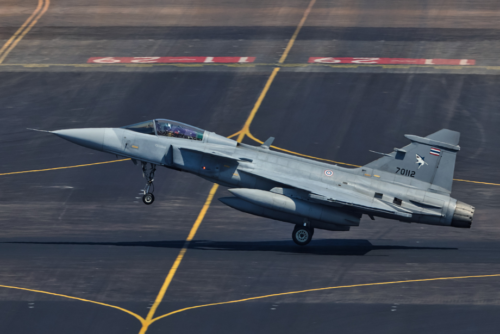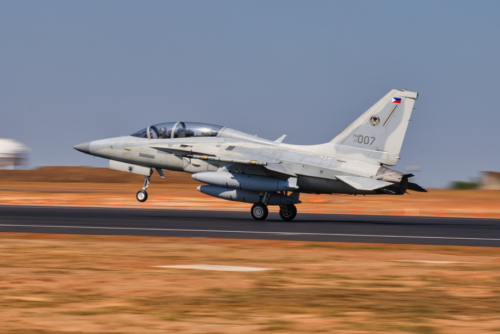The Royal Australian Air Force (RAAF) proudly concluded Exercise Pitch Black 24, which ran from July 12 to August 2, 2024, marking the exercise’s largest iteration in its 43-year history. This year’s exercise, hosted across RAAF Base Darwin, RAAF Base Tindal, and RAAF Base Amberley, brought together 140 aircraft and approximately 4,400 personnel from 20 nations, underscoring Australia’s commitment to strengthening international defense ties and enhancing interoperability.

Unprecedented Scale and First-time Appearances
Exercise Pitch Black 24 set new benchmarks in international air combat training with its largest scale ever, featuring unprecedented global participation. This year’s exercise saw the debut of several notable participants and assets. For the first time, the U.S. Air Force deployed its advanced F-22A Raptor, bringing unmatched stealth and air superiority capabilities. The Italian Navy made a historic appearance with its aircraft carrier ITS Cavour, marking a new dimension to the exercise’s scope. Adding to the significance, the Italian Air Force brought its Eurofighter Typhoons, F-35A, and F-35B fighters. Together with the Italian Navy, they represent the largest foreign contingent at Pitch Black 24. Spain also made a substantial contribution with its four Eurofighter aircraft.
The inclusion of these new participants was indeed remarkable, but the exercise also highlighted the enduring nature of international partnerships. Thailand’s participation is particularly noteworthy this year, as it marks the 20th anniversary since the Royal Thai Air Force (RTAF) first joined Pitch Black. The detachment leader who guided Thailand into its inaugural Pitch Black exercise two decades ago is now the Commander-in-Chief of the RTAF. This milestone underscores the long-standing commitment and evolving role of Thailand within the Pitch Black framework.
Additionally, the Philippine Air Force made a historic entry by deploying its FA-50PH fighters abroad for the first time. This marked a significant step for the Philippine military and demonstrated the expanding scope of international cooperation. Spain and Italy’s participation, alongside the Philippines’ debut, showcased the broadening spectrum of global military collaboration and the exercise’s growing international footprint.
Colonel Randy Pascua of the Philippine Air Force also highlighted the importance of this year’s exercise for his country. “We are proud to participate with air assets and a substantial contingent for our deployment,” Colonel Pascua stated.
Building Stronger Relationships and Interoperability
A central theme of Exercise Pitch Black 2024 was interoperability. The exercise offered a critical opportunity for nations to align their operational procedures and enhance collaborative capabilities. German Eurofighter pilot Captain Fabian emphasized, “Interoperability means each nation’s air force is not just looking out for itself, but is trying to share procedures at the operational level, so that there is a common understanding of interrelated air operations and thus common benefits and advantages.” This sentiment was echoed by Major Fernando from Spain, who noted the meticulous preparation required for such a large-scale deployment.
Colonel Randy Pascua of the Philippine Air Force echoed this sentiment, highlighting the exercise’s role in enhancing operational integration and understanding between different air forces. “The collaboration and camaraderie among the participant nations have been remarkable fostering a spirit of mutual respect and learning. Moreover the exercise has highlighted areas where we can improve and innovate, driving us to continually enhance our TTPs (Tactics, Techniques and Procedures),” Pascua noted.
One of the most notable aspects of Pitch Black 24 was the emphasis on creating lasting bonds between personnel from different countries. This objective was highlighted by Lieutenant Colonel Brandon Pope of the United States Marine Corps, who stated, “My number one goal out here is to build ships, and that sounds funny coming from a guy who’s wearing wings. But here’s what I mean by that: I’m out here to build friendships and we’re out here to build relationships because with those two things, the tactics, the integration, those things will come in time, and we’ll be good there.”
Ground Support Personnel: The Unsung Heroes
Behind the scenes, ground support personnel from foreign participating air forces also played a crucial role in ensuring the smooth operation of the exercise. This included contributions from the Royal Air Force (RAF) and New Zealand, who provided essential support that was vital for the success of Pitch Black 24.
The RAF’s ground-based support elements, including personnel from RAF Coningsby and RAF Brize Norton, were instrumental in various roles. RAF Police conducted joint patrolling and security operations, while RAF drivers and support staff contributed to refueling and logistical operations. Additionally, RAF chefs played a key role in catering to the thousands of participants, ensuring that everyone was well-fed and prepared for the demanding schedule of the exercise.
New Zealand’s contributions were equally significant. The Royal New Zealand Air Force provided crucial support in the form of ground operations, including security, transportation, and logistical support. Both countries’ personnel worked closely with their Australian counterparts to ensure that the exercise ran smoothly and efficiently.
A Showcase of Global Air Combat Capabilities
Exercise Pitch Black 24 offered a comprehensive display of cutting-edge air combat capabilities, with over 1,700 missions executed across an area roughly the size of Great Britain. This expansive operational environment showcased some of the most advanced aircraft and systems from around the world, highlighting the exercise’s scale and complexity.

The participating nations demonstrated a remarkable range of air combat assets, including Thailand’s JAS-39 Gripen, South Korea’s F-15K Slam Eagle, Singapore’s F-16C/D fighters, and Australian EA-18G Growlers, among others. The diverse aircraft types and their capabilities were integral to the exercise, which featured a broad spectrum of scenarios designed to test and enhance operational effectiveness.
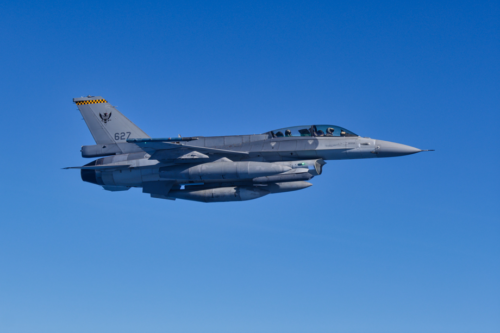
In the first week of the exercise, participants engaged in simulated offensive counter air operations, focusing on achieving air superiority against adversarial forces. This initial phase laid the groundwork for the subsequent weeks, which were dedicated to more complex air interdiction scenarios. During these weeks, aircrews were divided into ‘red team’ and ‘blue team,’ each flying from separate locations and engaging in a series of dynamic, adversarial missions. These scenarios encompassed both offensive counter air (OCA) and defensive counter air (DCA) operations, allowing participants to hone their skills in both air-to-air and air-to-ground combat.
The exercise’s operational environment was meticulously designed to challenge the participants, requiring extensive coordination and integration among various nations. This was exemplified by the multinational air-to-air refueling operations, which were crucial for maintaining operational effectiveness and extending the range of participating fighter aircraft. The refueling effort was supported by a coalition of Airbus A330 MRTT tanker forces from Australia, Singapore, France, the UK, and the NATO Multinational MRTT Unit.
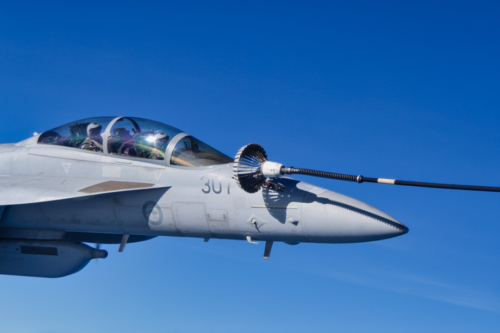
The extensive and varied mission profiles provided an invaluable platform for participating forces to demonstrate their capabilities, refine their procedures, and improve their readiness for real-world contingencies. The comprehensive training environment of Pitch Black 24 was instrumental in fostering interoperability and enhancing the overall effectiveness of the global air combat community.
Local Economic Impact and Community Engagement
Exercise Pitch Black 24 not only advanced international military cooperation but also provided significant benefits to the local community in Darwin. The arrival of over 4,000 personnel, alongside the myriad of aircraft and support equipment, brought a considerable economic boost to the Northern Territory’s capital.
Local businesses in Darwin experienced increased patronage as a direct result of the exercise. Hotels, restaurants, pubs, and retail stores saw an uptick in activity, with establishments catering to the influx of international and domestic military personnel as well as military enthusiasts hoping to catch a glimpse of the participating aircraft. Their presence contributed to the city’s hospitality sector, with hotels and restaurants benefiting from higher occupancy rates and increased dining and entertainment expenses.
Public venues and shopping districts also saw a boost in foot traffic, as personnel explored the local area during their downtime. This influx of visitors provided a welcome economic lift for local businesses and highlighted the reciprocal benefits of hosting such large-scale international events, contributing to a broader positive economic impact on the region.
The local community’s support and engagement with Exercise Pitch Black 24 were evident in their enthusiastic participation in public events. From the open day at RAAF Bases Darwin to the Mindil Beach flying display, the exercise fostered a strong connection between the military and the residents of Darwin. The RAAF Base Darwin open day saw thousands of visitors come out to witness the exercise. More than 4,500 school students interacted with international personnel during the exercise, fostering a greater understanding of military operations and international cooperation among the younger generation of Australians. The mutual benefits of this engagement underscore the broader impact of the exercise beyond its military objectives, enhancing community relations and supporting local economic growth.
Looking Ahead
As Exercise Pitch Black 24 wraps up, the focus now shifts to the future of this critical training exercise. The lessons learned and the relationships built during this iteration will continue to influence international air combat training and cooperation. With plans already underway for Pitch Black 2026, the exercise is set to build on the successes of 2024, further strengthening regional security and global defense partnerships.
As Air Commodore Pete Robinson aptly noted, “The value of this exercise comes in the experience we’ve built with international partners, and the relationships and friendships we’ve created with them on the ground and in the air.”
Exercise Pitch Black 24 has once again demonstrated the importance of international collaboration in maintaining regional security and stability. As nations return to their respective bases, they carry forward the lessons learned and the strengthened bonds of partnership forged during this landmark exercise.
